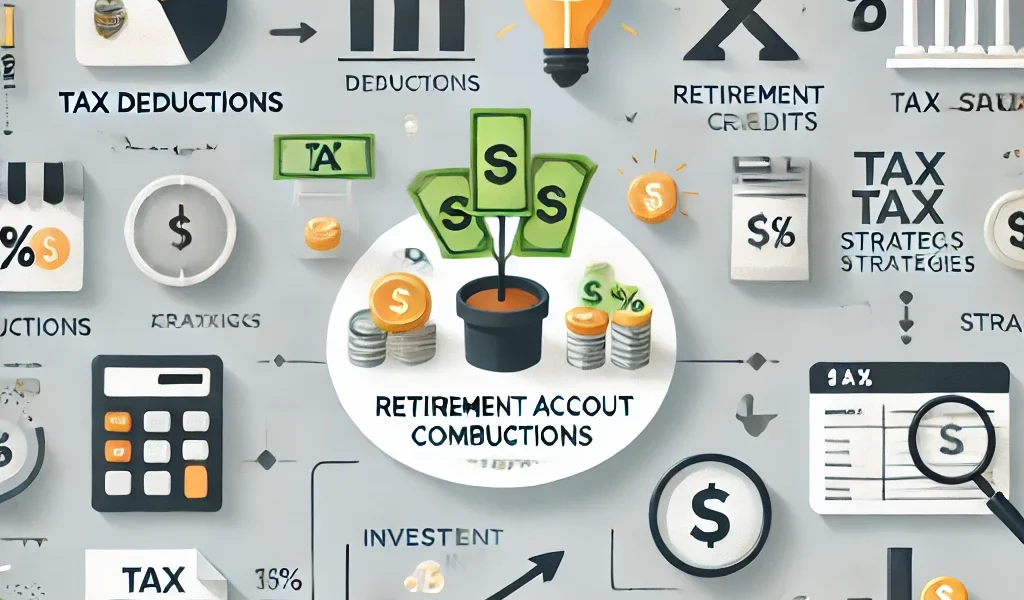Introduction
Tax planning is a crucial part of financial management that helps individuals and businesses reduce tax liability while maximizing savings. By implementing effective tax strategies, you can legally keep more of your hard-earned money and use it to grow your wealth.
In this guide, we will explore essential tax planning strategies that can help you optimize deductions, credits, and investment opportunities. Whether you’re a salaried employee, a freelancer, or a business owner, these tips will ensure you make the most of your income.
1. Understand Your Tax Bracket
One of the first steps in tax planning is understanding where you fall within the tax bracket system. The U.S. tax system is progressive, meaning higher income is taxed at a higher rate.
Steps to Optimize Your Tax Bracket:
- Estimate your taxable income for the year.
- Plan deductions and credits to reduce taxable income.
- Time your income and expenses strategically to stay in a lower tax bracket.
2. Maximize Retirement Contributions
Contributing to retirement accounts is one of the most effective ways to reduce taxable income while securing your future.
Best Retirement Accounts for Tax Savings:
- 401(k) or 403(b): Contributions reduce taxable income, and employers may offer matching contributions.
- Traditional IRA: Contributions may be tax-deductible depending on income levels.
- Roth IRA: No immediate tax deduction, but withdrawals in retirement are tax-free.
Tip: If you’re self-employed, consider a SEP IRA or Solo 401(k) for larger contribution limits.
3. Take Advantage of Tax Deductions
Deductions help lower your taxable income, reducing the amount of tax owed.
Key Tax Deductions to Consider:
- Standard Deduction: The IRS allows a fixed deduction amount each year.
- Itemized Deductions (if applicable): Includes mortgage interest, charitable donations, medical expenses, and state/local taxes.
- Business Deductions: If you own a business, expenses like office supplies, travel, and marketing can be deducted.
- Student Loan Interest Deduction: Up to $2,500 in interest can be deducted if you meet income requirements.
Tip: Keep receipts and records to substantiate deductions in case of an audit.
4. Utilize Tax Credits
Unlike deductions, tax credits directly reduce the amount of tax owed. Some common tax credits include:
- Earned Income Tax Credit (EITC): Helps low to moderate-income earners.
- Child Tax Credit: Offers up to $2,000 per child under age 17.
- American Opportunity Credit: Provides tax relief for eligible college tuition expenses.
- Energy-Efficient Home Credit: If you invest in solar panels or energy-saving home improvements, you may qualify.
Tip: Always check if you qualify for refundable credits, which can increase your refund even if you owe no taxes.
5. Optimize Capital Gains & Losses
Capital gains taxes apply to profits from selling assets like stocks, real estate, or businesses.
Strategies to Reduce Capital Gains Taxes:
- Hold investments for over a year to benefit from lower long-term capital gains rates.
- Use tax-loss harvesting to offset gains with investment losses.
- Consider gifting appreciated assets to family members in lower tax brackets.
- Invest in tax-advantaged accounts (e.g., Roth IRA, 529 plans) to minimize capital gains exposure.
Tip: Always consult a tax professional before making significant investment decisions.
6. Defer or Accelerate Income Strategically
Timing your income can help lower your tax burden:
- Defer income to the next year if you expect lower tax rates in the future.
- Accelerate income into the current year if tax rates are expected to rise.
- Shift income to family members in lower tax brackets where legally permitted.
Tip: Business owners can adjust when they bill clients or receive payments to manage taxable income effectively.
7. Take Advantage of Health Savings Accounts (HSAs) & Flexible Spending Accounts (FSAs)
HSAs and FSAs offer tax benefits for healthcare expenses.
- HSA Contributions are tax-deductible, grow tax-free, and can be withdrawn tax-free for medical expenses.
- FSA Contributions reduce taxable income but must be used within the year.
Tip: If you have a high-deductible health plan, max out your HSA contributions to build tax-free medical savings.
8. Consider Charitable Giving
Donating to qualified charities not only helps good causes but also reduces your tax burden.
Ways to Maximize Charitable Tax Benefits:
- Donate appreciated assets (e.g., stocks) instead of cash to avoid capital gains tax.
- Use donor-advised funds (DAFs) to control when and how donations are made.
- Itemize deductions if charitable contributions exceed the standard deduction.
Tip: Keep proper documentation (receipts, acknowledgments) for IRS compliance.
9. Minimize Self-Employment & Business Taxes
If you are self-employed or own a business, smart tax planning can save you thousands.
Strategies for Entrepreneurs & Freelancers:
- Deduct home office expenses if you work from home.
- Write off business-related travel, meals, and education expenses.
- Use an LLC or S-Corp structure to reduce self-employment taxes.
- Employ family members to shift income into lower tax brackets.
Tip: Consider working with a tax professional to identify all eligible business deductions.
10. Stay Updated with Tax Law Changes
Tax laws change frequently, and staying informed helps you maximize tax savings.
- Follow IRS updates and changes in tax brackets.
- Work with a tax advisor for personalized strategies.
- Review tax-saving opportunities before year-end to make necessary adjustments.
Conclusion
Effective tax planning can save you thousands of dollars each year. By leveraging deductions, tax credits, retirement contributions, and strategic income management, you can legally keep more of your money while growing your wealth.




